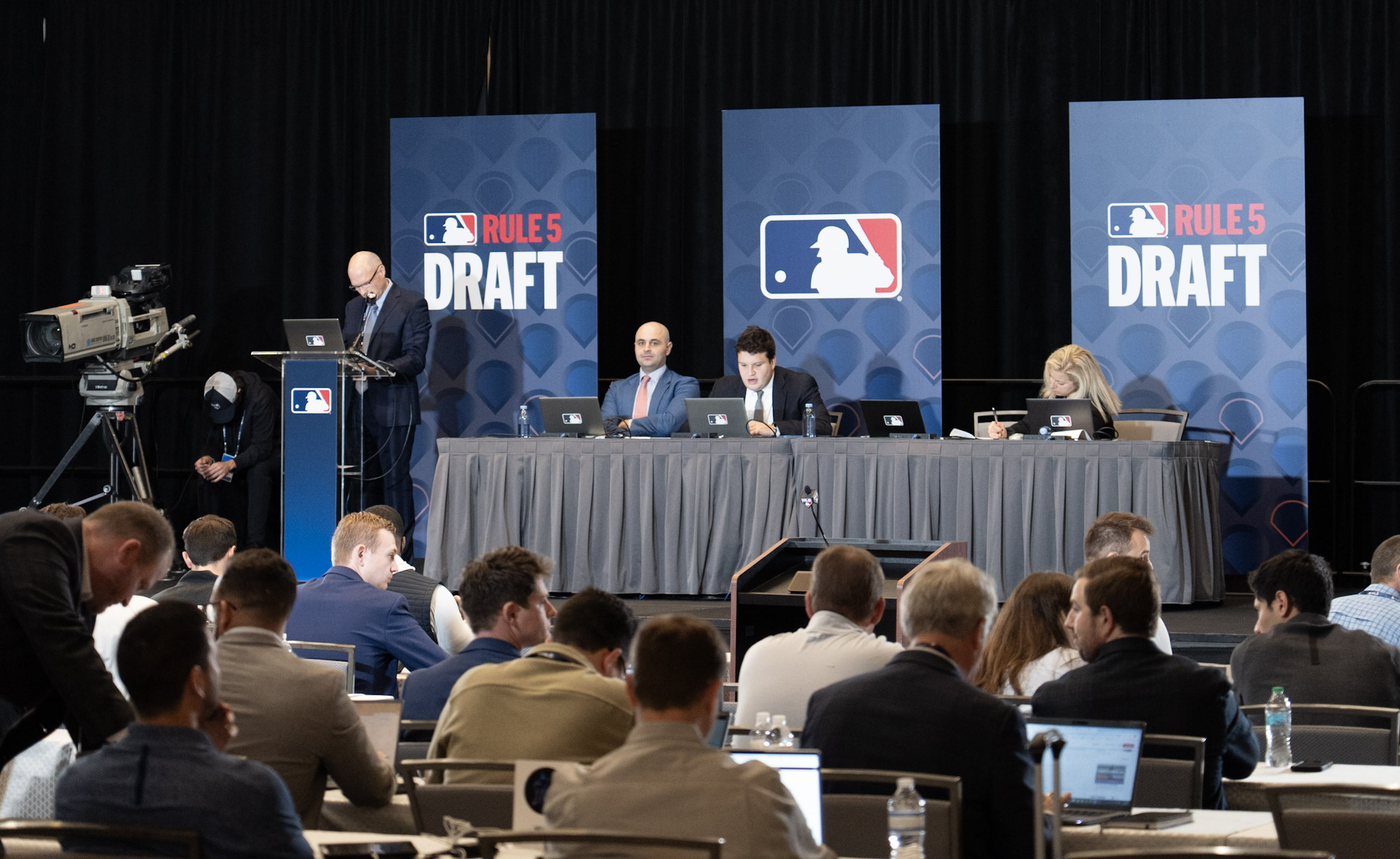In Jayson Stark's survey of executives, coaches and scouts regarding the 2023-24 offseason published a couple of weeks ago, Lucas Giolito led the vote for the winter's worst free agent signing.
Granted, it was far from a majority, and it was barely a plurality. Giolito received eight of 31 votes, and Jordan Hicks and Jung Hoo Lee were right behind him with seven apiece, but it still seemed somewhat harsh, considering it was just a two-year, $38.5 million deal for an accomplished 29-year-old pitcher.
Now that Giolito is dealing with a partially torn UCL ligament and flexor strain that jeopardizes his 2024 season, the status of the signing is pretty much impossible to argue.
Alex Cora told reporters on Tuesday that Giolito experienced elbow discomfort after his second spring training start last Friday, and all of the paths forward are time-intensive at best, and invasive at worst. He already had Tommy John after the Nationals drafted him in 2012, and the second one doesn't get any easier.
The Red Sox's signing of Giolito probably wouldn't have been that controversial if he didn't represent three-quarters of the Red Sox's spending this winter. Were Giolito merely a supplemental starter for a team with obvious October ambitions, his miserable final two months of the 2023 season could probably be overlooked. Since the Red Sox only signed Liam Hendriks (who will miss the first half due to his own Tommy John surgery rehab) and Cooper Criswell, the red flags the Red Sox were willing to overlook now draw even more scrutiny.
After Giolito signed with the Red Sox in January, we discussed the road not taken when Giolito turned down the White Sox's four-year extension before the 2021 season. The combination of a lower arbitration trajectory and a below-expected initial foray into free agency put him behind what he would've earned with the White Sox:
- Through 2024, with extension: $50 million
- Through 2024, w/o extension: $41.05 million
But we noted that while the contract Giolito signed with Boston wasn't what he envisioned, the player option in the second year offered him some newfound protection. Had Giolito's elbow failed him under the extension the White Sox proposed, that team would decline the hefty club option for 2025 (which I estimated at $22 million) and pay him a buyout (which I estimated at $5 million). Barring some kind of miracle recovery, Giolito will assuredly exercise his $19 million player option for 2025, which is money he isn't likely to see for that season under any other agreement.
Give Giolito the estimated $5 million buyout after the season and an incentive-laden make-good contract for 2025 -- base salary, what, $6 million? -- and that erases the edge that he would've held had he accepted the White Sox's terms.
- Through 2025, with extension: $56 million
- Through 2025, w/o extension: $59.5 million
The purpose of tracking Giolito's earnings isn't score-keeping or pocket-watching, but learning about the risk-reward ratio when a player -- particularly a pitcher -- turns down an extension. When Giolito decided to bet on himself, he probably didn't envision posting ERAs of 4.90 and 4.88 and missing all of 2024 ... and somehow, he still ended up with the better hand.
A better hand shouldn't be confused with a winning hand, of course. It took a specific, terrible set of circumstances to come out ahead, and he'd probably trade some of that money for a healthier elbow if advancements in science allowed. It merely illustrates that while an early-career extension offers enviable security, taking the straightest line to free agency creates its own form of protection.
FanGraphs explains the business
The last time FanGraphs founder David Appelman detailed FanGraphs' finances, the picture was pretty grim. The site had to deal with the double whammy of the pandemic-shortened 2020 season and a three-month lockout after the 2021 season, and so he issued an appeal for more subscribers to weather the storm.
It's heartening to know that FanGraphs is in much better shape this time around, although no media company can feel too confident. The online advertising business is in particularly rough shape, which makes memberships all the more valuable.
Why I point it out is that Appelman goes into great detail about how programmatic online ads work for publishers -- or don't work, as the last two years show. It's the same case here at Sox Machine, although as a smaller site with less traffic than FanGraphs, subscribers represent a larger portion of our income. If you've ever wondered how that part of the business works, Appelman explains it better than I ever could.
The good news that we've added more than 450 supporters since James Fegan joined us. That puts us ahead of where we thought we might be after one month, and we're incredibly grateful for the initial outpouring. We still have a long way to go to meet our goals for full-time stability, so we can't afford to get ahead of ourselves, but if you'd like to help us stay ahead of schedule, consider a membership.






